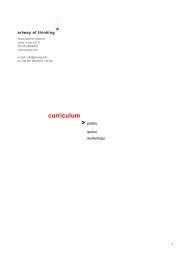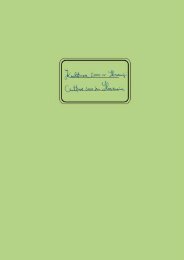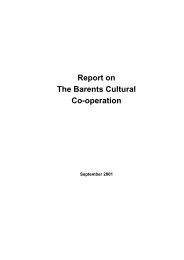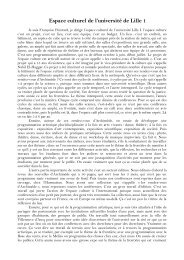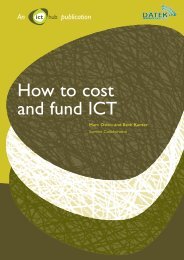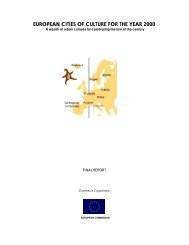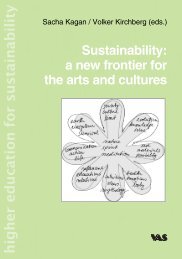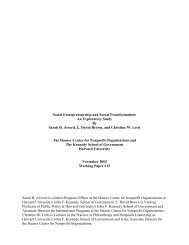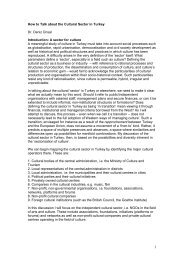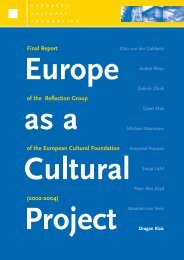A guide to the export and import of cultural goods between Russia ...
A guide to the export and import of cultural goods between Russia ...
A guide to the export and import of cultural goods between Russia ...
Create successful ePaper yourself
Turn your PDF publications into a flip-book with our unique Google optimized e-Paper software.
Introduction<br />
Who is involved in controlling <strong>the</strong> movement <strong>of</strong> art across borders?<br />
The main instrument for controlling <strong>the</strong> movement <strong>of</strong> <strong>cultural</strong> <strong>goods</strong> across international<br />
borders is <strong>the</strong> <strong>export</strong> licence. It is issued in EU countries by <strong>the</strong> ‘competent authority’, one<br />
or more designated organisations in each country, usually in <strong>the</strong> heritage or museums<br />
sec<strong>to</strong>r. In <strong>Russia</strong>, <strong>export</strong> licences are issued by Rossvyazokhrankultura, <strong>the</strong> Federal Regula<strong>to</strong>ry<br />
Service for Mass Media, Communications <strong>and</strong> Protection <strong>of</strong> Cultural Heritage.<br />
O<strong>the</strong>r agencies involved in controlling <strong>the</strong> movement <strong>of</strong> art across borders are <strong>the</strong> cus<strong>to</strong>ms<br />
authorities <strong>and</strong> <strong>the</strong> Police.<br />
The <strong>export</strong> licence is a sort <strong>of</strong> passport for <strong>cultural</strong> <strong>goods</strong>. It ensures that <strong>the</strong> <strong>goods</strong> have<br />
undergone a process <strong>of</strong> examination <strong>and</strong> <strong>the</strong>ir movement <strong>to</strong> ano<strong>the</strong>r country has been approved<br />
by specialists. The <strong>goods</strong> may be subjected <strong>to</strong> expert inspection <strong>and</strong> valuation or<br />
a review <strong>of</strong> documentation <strong>of</strong> <strong>the</strong> object, its value <strong>and</strong> provenance may take place before<br />
an <strong>export</strong> licence can be issued.<br />
A violin can be a simple, inexpensive instrument for a child <strong>to</strong> practise on or it could<br />
be an extremely valuable <strong>and</strong> rare masterpiece <strong>of</strong> un<strong>to</strong>ld value. A painting could be<br />
centuries old or an expert modern reproduction. How is a cus<strong>to</strong>ms <strong>of</strong>ficer <strong>to</strong> know <strong>the</strong><br />
difference? The system <strong>of</strong> <strong>export</strong> licensing is designed <strong>to</strong> overcome this difficulty. In<br />
some countries it is even possible <strong>to</strong> get a certificate for objects which, after expert appraisal,<br />
are classified as not requiring an <strong>export</strong> licence <strong>and</strong> this can be used as pro<strong>of</strong><br />
for cus<strong>to</strong>ms authorities.<br />
How do <strong>the</strong> regulations vary <strong>between</strong> countries?<br />
National heritage protection legislation varies considerably from one country <strong>to</strong> ano<strong>the</strong>r.<br />
If an art buyer wanted <strong>to</strong> <strong>export</strong> a similar <strong>cultural</strong> object from a number <strong>of</strong> EU countries <strong>to</strong><br />
<strong>Russia</strong>, <strong>the</strong>y would report quite different experiences for each country.<br />
Although <strong>the</strong>re is a shared basis <strong>of</strong> EU legislation which applies <strong>to</strong> <strong>export</strong>s <strong>of</strong> <strong>cultural</strong><br />
<strong>goods</strong> from any EU country <strong>to</strong> <strong>Russia</strong>, in some countries national regulations are very<br />
much more restrictive than EU legislation. In o<strong>the</strong>rs, EU legislation is seen as sufficient<br />
for <strong>export</strong> control, apart from some additional restrictions on <strong>export</strong>ing major national<br />
treasures from museum collections.<br />
The main differences our imaginary art buyer would experience would be:<br />
• How long it takes <strong>to</strong> get an <strong>export</strong> licence (from a few days <strong>to</strong> many months)<br />
• Whe<strong>the</strong>r <strong>the</strong>y have <strong>to</strong> present <strong>the</strong> object for inspection (it is obliga<strong>to</strong>ry in some countries<br />
but o<strong>the</strong>rs only request it where <strong>the</strong>re is a particular need)<br />
• If <strong>the</strong>y have <strong>to</strong> pay a fee for expert valuation or o<strong>the</strong>r duty<br />
• Whe<strong>the</strong>r <strong>the</strong>re is an inven<strong>to</strong>ry <strong>of</strong> <strong>goods</strong> restricted for <strong>export</strong> that <strong>the</strong>y can consult before<br />
purchase (or o<strong>the</strong>r mechanism for avoiding sales <strong>of</strong> ‘un-<strong>export</strong>able’ <strong>goods</strong>)<br />
• Whe<strong>the</strong>r <strong>the</strong>y have any legal right <strong>to</strong> appeal against <strong>the</strong> valuation or refusal <strong>of</strong> an <strong>export</strong><br />
licence<br />
13



